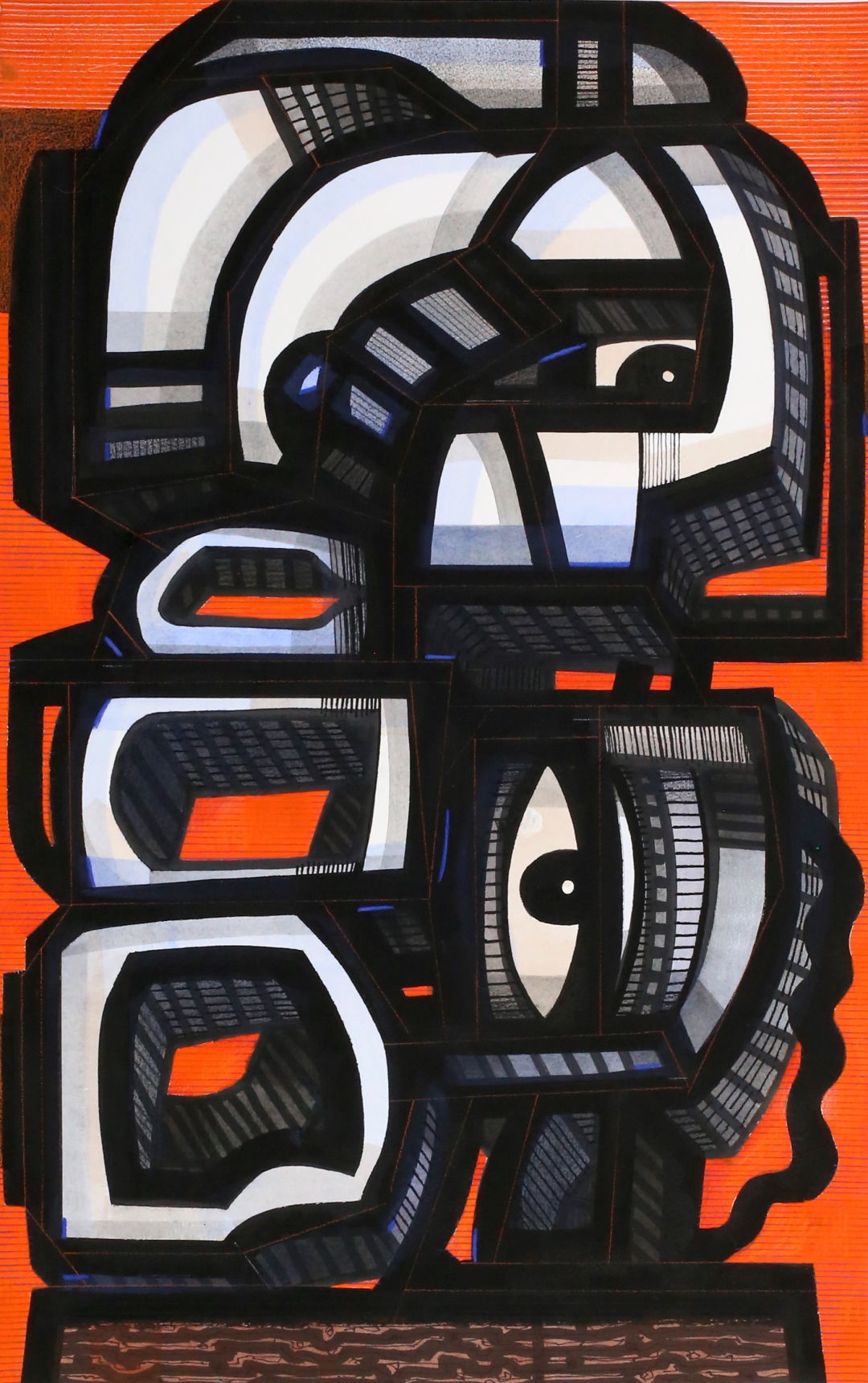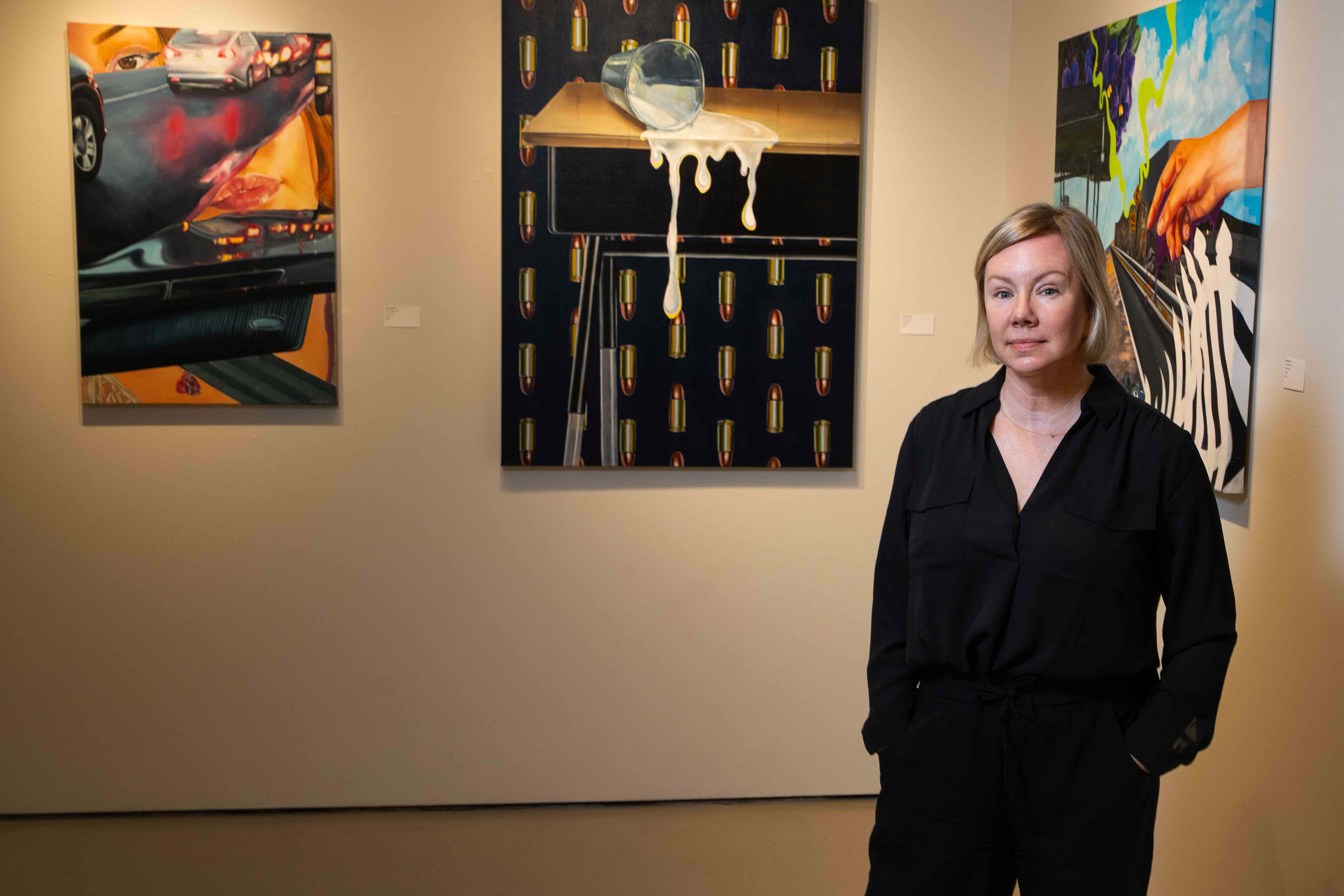Artist Christopher Skura Returns to Sarasota With 'Social Studies' Exhibit at Art Center Sarasota

Clowntown by Christopher Skura
Image: Courtesy Photo
Reflecting on the early days of the Covid-19 pandemic, artist Christopher Skura finds analogies in dystopian fiction. From his vantage in New York City, “it was a bit lawless and Blade-Runner-ish,” he recalls. “It was dangerous to walk around, and the street artists came out at night to do their work because no one was around to stop them. Many businesses closed, and every building in my neighborhood became a canvas and got covered in street art paint.”
But the deluge of graffiti that greeted Skura every time he opened his door soon became more than window dressing for a troubled time. As he took in the tags and murals, the forms and textures began to influence his own work in unexpected ways.

Christopher Skura
Image: Courtesy Photo
“The first thing that struck me was the urgency in the execution,” he says. “The formal, rounded shapes were a result of speed with no details, and they captured the energy of living in New York. Also, making the same design over and over creates a certain muscular confidence that shows in the line. I started to mimic the rounded shapes and omit details, not really caring if it was good art or not. What was most important was the action of doing.”
The finished result of his efforts, a series called Social Studies, opens January 25 at Art Center Sarasota. It evolved from sketchbooks in that surreal early-Covid period when Skura drew all day long, sometimes for eight-hour stretches. “This went on for months, and I saw [the paintings] come to life,” he says. “By working more and thinking less, I started to see something more natural and less concerned about the expectations of art theory, the art audience and art market—art free from editing that came from the subconscious.”
For a longtime sculptor who traditionally works in three dimensions, this rare 2D exhibition represents unusual artistic marriages—between paint and colored pencil, highbrow and lowbrow, abstraction and figuration. Knowing the inspiration, it’s easy to spot the influence of street art, but this is street art produced by a fine artist.

Head Space by Christopher Skura
Image: Courtesy Photo
Just as apparent in works like Portrait of Julie, The Tootchache and Head Space is the specter of Pablo Picasso and the revolutionary geometry of cubism, where the elements of a portrait may be present, if not in the expected order.
“Cubism is the first art ‘ism’ I discovered as child,” Skura says. “I was trying to copy Picasso’s work at 11 years old. It was a fracturing and flattening of the world that resonated with me.”
Though some of the pieces in Social Studies, such as Monument to COVID Spring, lean more fully into abstract forms, Skura says, “I see them all as a type of portraiture. They all become a depiction of a living thing or a psychological state.” Even in the works that depart most fully from traditional figuration, eyes tend to appear in them somewhere, as a leitmotif throughout the series. Skura says the lowbrow, primitive nature of their form appeals to him, but in the artist’s world of layers and contradictions, there’s more to them than first appears. In a more cerebral sense, he adds, “they are a signpost of consciousness.”
The exhibition also marks Skura’s return to the city where he established his artistic bona fides. He lived in Sarasota from 1982 to 1995, where he studied with professional artists, including as a studio assistant for sculptor John Chamberlain, and where he joined the staff at the Ringling Museum of Art. He dabbled in music and film as part of the Dude Ranch, a now-legendary studio space that served as the lifeblood of the Sarasota counterculture.

Conversation Around the Table by Christopher Skura
Image: Courtesy Photo
Skura plans to attend Art Center Sarasota’s opening-night reception for Social Studies on January 25. But as a New Yorker for nearly three decades now, he says that during his visits to the Gulf Coast, he doesn’t recognize much of the Sarasota in which he came of artistic age.
“In 1982, Sarasota was sleepy, shabby and comfortable, with many interesting and creative people,” he recalls. “We would rent an old stucco house for a couple hundred dollars a month, move six or seven people in, set up the amps and drums in the living room. You could live cheaply downtown and walk everywhere. There was no art scene for the art or music we were making, so we created our own. I think that Art Center Sarasota is doing a terrific job of keeping Sarasota’s art history alive.”



